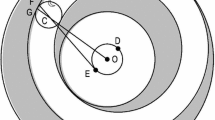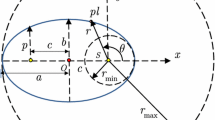Abstract.
During the second half of the seventeenth century, the outstanding problem in astronomy was to understand the physical basis for Kepler’s laws describing the observed orbital motion of a planet around the Sun. In the middle 1660s,Robert Hooke (1635–1703) proposed that a planet’s motion is determined by compounding its tangential velocity with the change in radial velocity impressed by the gravitational attraction of the Sun, and he described his physical concept to Isaac Newton (1642–1726) in correspondence in 1679. Newton denied having heard of Hooke’s novel concept of orbital motion, but shortly after their correspondence he implemented it by a geometric construction from which he deduced the physical origin of Kepler’s area law,which later became Proposition I, Book I, of his Principia in 1687.Three years earlier, Newton had deposited a preliminary draft of it, his De Motu Corporum in Gyrum (On the Motion of Bodies), at the Royal Society of London, which Hooke apparently was able to examine a few months later, because shortly there-after he applied Newton’s construction in a novel way to obtain the path of a body under the action of an attractive central force that varies linearly with the distance from its center of motion (Hooke’s law). I show that Hooke’s construction corresponds to Newton’s for his proof of Kepler’s area law in his De Motu. Hooke’s understanding of planetary motion was based on his observations with mechanical analogs. I repeated two of his experiments and demonstrated the accuracy of his observations.My results thus cast new light on the significance of Hooke’s contributions to the development of orbital dynamics, which in the past have either been neglected or misunderstood.
Similar content being viewed by others
Author information
Authors and Affiliations
Corresponding author
Additional information
Michael Nauenberg is Professor Emeritus of Physics at the University of California, Santa Cruz. His primary research has been in theoretical physics, but he also has written several articles and coedited a book on the historical development of dynamics by Huygens, Newton, and Hooke.
Rights and permissions
About this article
Cite this article
Nauenberg, M. Robert Hooke’s Seminal Contribution to Orbital Dynamics. Phys. perspect. 7, 4–34 (2005). https://doi.org/10.1007/s00016-004-0226-y
Issue Date:
DOI: https://doi.org/10.1007/s00016-004-0226-y




